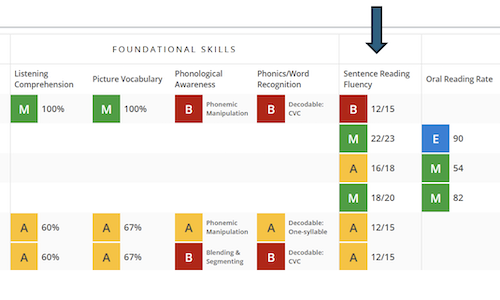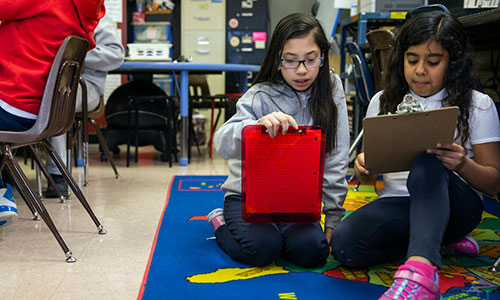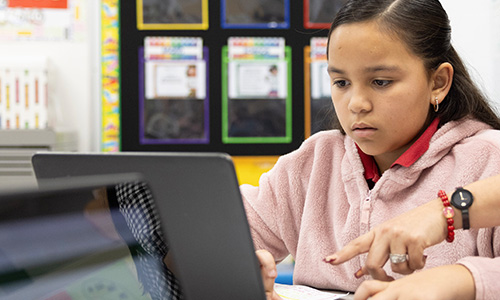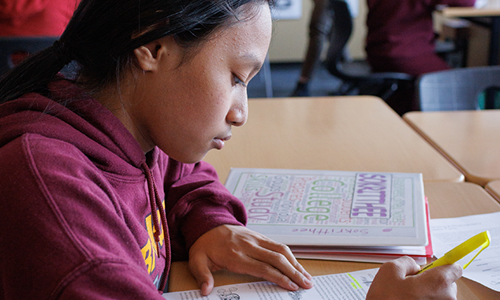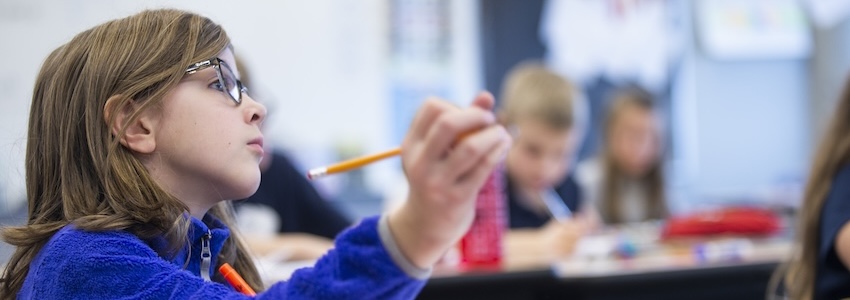 In 2004, after teaching K–3 students, I became a middle school reading specialist working primarily with fifth-graders who needed extra support learning to read and write. I understood the power of using assessment data to drive instructional decisions and knew it was key to improving outcomes for students. But as I looked into the eyes of these readers, I wondered if they understood their challenges and what strengths they already possessed.
In 2004, after teaching K–3 students, I became a middle school reading specialist working primarily with fifth-graders who needed extra support learning to read and write. I understood the power of using assessment data to drive instructional decisions and knew it was key to improving outcomes for students. But as I looked into the eyes of these readers, I wondered if they understood their challenges and what strengths they already possessed.
My first decision was to make a data binder for each student and start assessing the skills needed to become a proficient reader and writer, including fluency, advanced decoding, morphology, reading comprehension, and grade-level writing. I showed them what they already did well, where there were opportunities for growth, and strategies to try to move toward meeting grade-level benchmarks. We set goals to achieve in each instructional area and were laser focused on using data to drive our work. Each day we engaged in a routine of working with words, reading, academic discourse, and writing.
Students tracked their progress through weekly and monthly assessments aligned to their areas of improvement and were highly motivated to meet their goals. I engaged students in weekly 1:1 data discussions, showing them how to analyze their data, adopt and adapt the strategies needed to improve, and act toward the goal. This predictable basic structure resulted in students becoming self-directed in their own learning and excited to see the results in the data we collected. It was a powerful learning year for us all!
When students understand and use their own assessment data, they begin to take meaningful ownership of their learning. No matter the grade level, students can learn to analyze their progress, adapt their strategies, and act with intention. This process builds agency—the belief that they have control over their growth.
Here are five practical ways to help students, from kindergarten through high school, use data to drive their learning forward.
1. Help young learners reflect on growth (grades K–3)
At this stage, the goal is to make learning visible. Use simple graphs, color-coded trackers, or sticker charts to help students see their progress in foundational skills like letter sounds, sight words, or number fluency.
Tip: Ask reflective questions during data discussions:
- What are you proud of?
- What helped you improve?
- What do you want to work on next?
This builds early habits of analyzing and acting on their learning in age-appropriate ways.
2. Use goal setting and student-friendly reports (grades 4–5)
Upper elementary students are ready to engage with simple data reports. Teach them how to read their own scores, understand what the numbers mean, and set achievable goals.
Tip: Have students create short-term learning goals based on a recent assessment (e.g., “I want to improve my multiplication facts by 10% before next month.”) and reflect by answering:
- What are you doing well?
- What are you most proud of?
- What skill needs more improvement?
- What will you do differently to meet your goal?
Help them track progress and celebrate milestones to build motivation and agency.
3. Guide students to analyze and plan (middle school)
Middle schoolers can take a more active role in breaking down their assessment data. Teach them how to spot trends (e.g., consistently missing a skill), compare past results, and reflect on their habits.
Tip: Use a data analysis worksheet that asks students to answer the following questions:
- What skills do you have as a reader, writer, or mathematician?
- What skill needs more work? How do you know?
- What will you do differently next time to meet your goals?
Support your students in creating action plans that adapt to their study habits or learning strategies.
4. Encourage strategic thinking (high school)
High school students should be encouraged to think critically and strategically about their performance. While focusing on everything from classroom tests to college entrance exams, teach students to identify patterns in their results and adjust accordingly.
Tip: After receiving assessment feedback, have students write a reflection that includes answers to the following questions:
- What helped you succeed?
- What obstacles got in the way?
- What is your next step?
Encourage peer discussions or coaching conferences to deepen self-awareness and accountability.
5. Normalize ongoing data conversations (all grades)
The most powerful data use happens when it becomes part of the learning culture. Whether students are 6 or 16, talking about their own learning data builds confidence and curiosity.
Create a safe environment where data is used not to label, but to guide. Make it a school or classroom norm to model reflective questions and celebrate progress. Coach students on using data to become better learners.
Tip: Create space for students to regularly share what they are learning about themselves as learners. Make it a routine to revisit goals, update progress, and adapt plans. This turns data use into a habit that supports lifelong learning.
Final thought
Assessment data is more than a test score; it is a tool for student empowerment. Whether they are beginning readers or preparing for college, every student can build the skills to analyze, adapt, and act—developing the agency they need to thrive.
